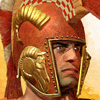HOME | DD
 ChrisHistoryartworks — Order of Saint John (1561 -1571)
ChrisHistoryartworks — Order of Saint John (1561 -1571)

#armor #corsair #galley #history #knight #malta #order #shield #knighthospitaller #europeanhistory #halberd #hospitaller #knights #military #militaryuniform #renaissancecostume #knightwarrior #navalcombat #knightarmor #renaissancefashion #armorknight #historyart #illustrastionart
Published: 2021-06-06 10:02:22 +0000 UTC; Views: 10429; Favourites: 169; Downloads: 25
Redirect to original
Description
Commissioned artwork (2010)-© 4pi publications-National Geographic (Greek edition). Illustration created for encyclopedia titled “History of Greek nation” part of the section concerning the uniforms and ships of rival forces collided in the naval battle of Lepanto in Greece, 7 October 1571).
The depicted character wears “three quarters” armor, used by knights and leaders of infantry units following the Order of Saint John in campaigns.
The expansion of the Ottomans into the Mediterranean, and the expected clash with the naval forces of the Christian west, transformed the Knights of St. John from land warriors to seafarers, corsairs and risky sea dogs. All too often, after the Christian and Turkish galleys exchanged gunfire or ramming-embolism, they were immobilized, and their crews tried to board the enemy deck, turning the naval battle into an infantry carnage and thus massive slaughter taking place from deck to deck. The use of the armor of the "three quarters" carried by the depicted fighter was a dangerous burden (in case he fell into the sea he had to get rid of its metal hoops, which made swimming difficult), but also mandatory, because it protected him from the dense arrow shots of the Turks or the musket firing of their snipers. Breastplates such as the one depicted here, usually were tested with fire arm shooting as to determine how “bulletproof” they could be, but this “bulletproof” items were rather the privilege of few. The widespread helmet "morion" that can be seen in the illustration, had a metal crest and a wide brim to repel the vertical blows from the Turkish swords or axes.
Although the warrior here depicted “ritually” with pole arm and shield, in naval battle conditions he would use sword, axe, dagger and shield, in close quarters confrontation with the enemy marines after the exchange of massive shooting and arrow volleys…Halberds and various pole arms were more suitable in land fighting…
Related content
Comments: 3

👍: 1 ⏩: 0

👍: 1 ⏩: 1

👍: 0 ⏩: 0

















